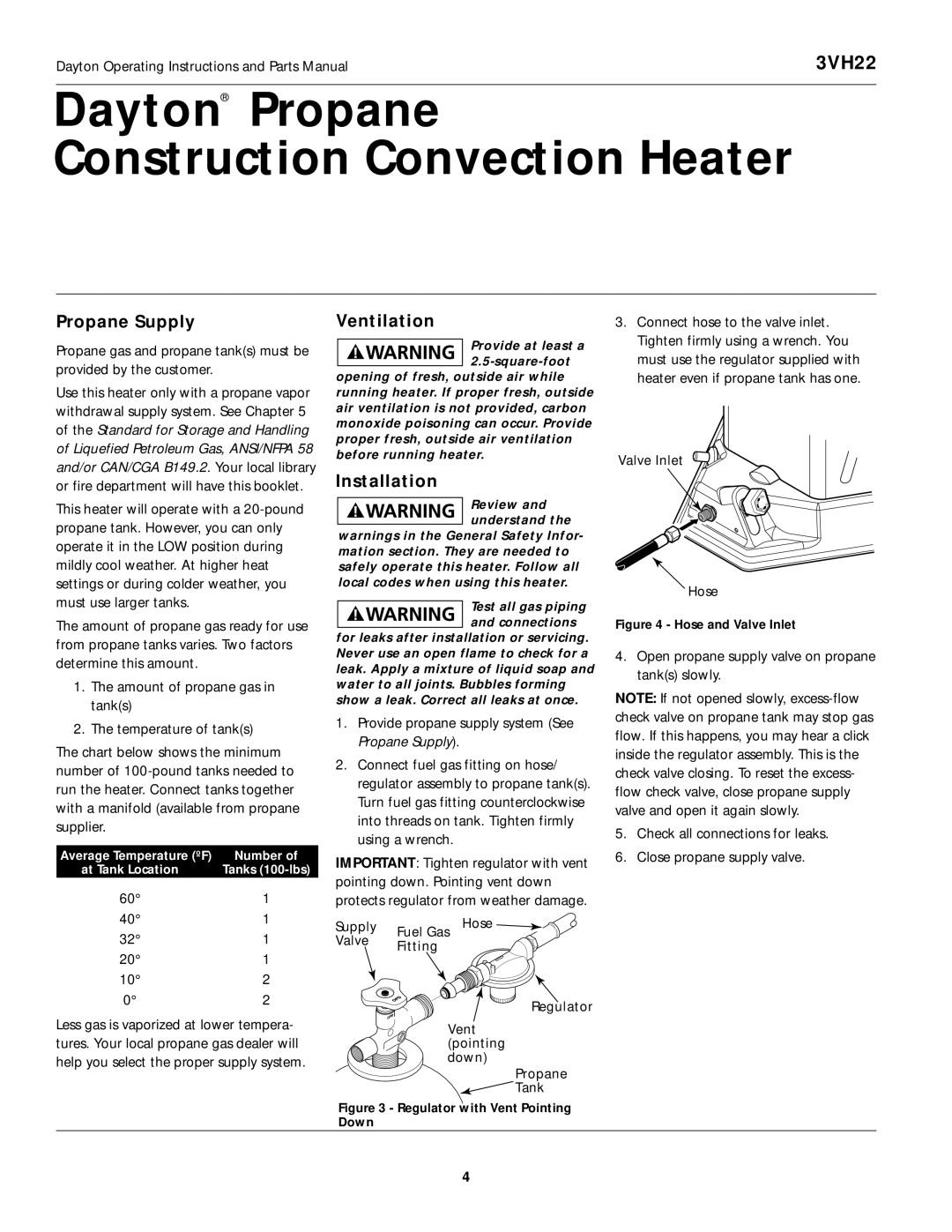
Dayton Operating Instructions and Parts Manual | 3VH22 |
Dayton® Propane
Construction Convection Heater
Propane Supply
Propane gas and propane tank(s) must be provided by the customer.
Use this heater only with a propane vapor withdrawal supply system. See Chapter 5 of the Standard for Storage and Handling of Liquefied Petroleum Gas, ANSI/NFPA 58 and/or CAN/CGA B149.2. Your local library or fire department will have this booklet.
This heater will operate with a
The amount of propane gas ready for use from propane tanks varies. Two factors determine this amount.
1.The amount of propane gas in tank(s)
2.The temperature of tank(s)
The chart below shows the minimum number of
Average Temperature (ºF) | Number of |
at Tank Location | Tanks |
60° | 1 |
40° | 1 |
32° | 1 |
20° | 1 |
10° | 2 |
0° | 2 |
Less gas is vaporized at lower tempera- tures. Your local propane gas dealer will help you select the proper supply system.
Ventilation
Provide at least a
opening of fresh, outside air while running heater. If proper fresh, outside air ventilation is not provided, carbon monoxide poisoning can occur. Provide proper fresh, outside air ventilation before running heater.
Installation
Review and understand the
warnings in the General Safety Infor- mation section. They are needed to safely operate this heater. Follow all local codes when using this heater.
Test all gas piping and connections
for leaks after installation or servicing. Never use an open flame to check for a leak. Apply a mixture of liquid soap and water to all joints. Bubbles forming show a leak. Correct all leaks at once.
1.Provide propane supply system (See Propane Supply).
2.Connect fuel gas fitting on hose/ regulator assembly to propane tank(s). Turn fuel gas fitting counterclockwise into threads on tank. Tighten firmly using a wrench.
IMPORTANT: Tighten regulator with vent pointing down. Pointing vent down protects regulator from weather damage.
Supply | Fuel Gas | Hose |
Valve |
| |
Fitting |
| |
|
|
Regulator
Vent (pointing down)
Propane Tank
Figure 3 - Regulator with Vent Pointing Down
3.Connect hose to the valve inlet. Tighten firmly using a wrench. You must use the regulator supplied with heater even if propane tank has one.
Valve Inlet
OFF |
|
LO | HI |
| |
MED |
|
Hose
Figure 4 - Hose and Valve Inlet
4.Open propane supply valve on propane tank(s) slowly.
NOTE: If not opened slowly,
5.Check all connections for leaks.
6.Close propane supply valve.
4
